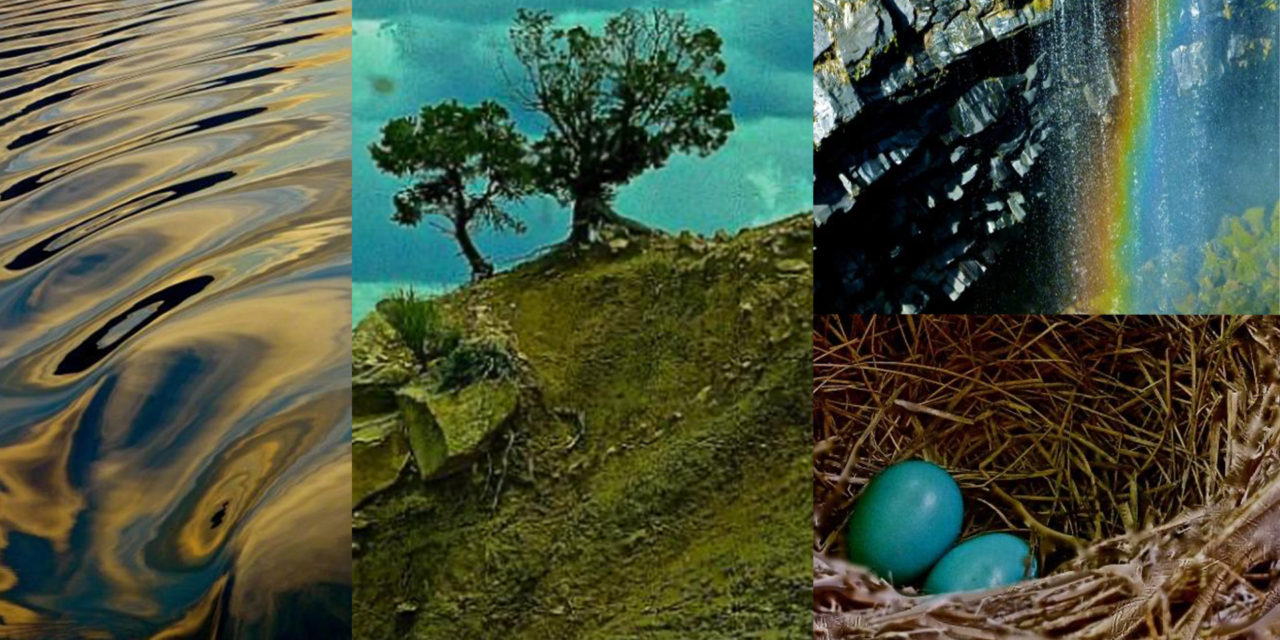Scouting the Natural World
Hungry for shared peace and a dose of indelible beauty, my husband and I signed up for a photography class. The last leg of our journey entailed boarding a boat for Stehekin, Washington. As we crossed the waters of Lake Chelan, he sprawled outside on the boat’s deck, absorbing the scenery. Anticipating camera jargon I wouldn’t know, I sat inside at a table to (finally) read my camera manual (well, part of it). The next morning, after the first lecture, we layered on rain gear, then explored the local harvest festival, cameras ready. Despite the dank weather, I scouted unusual natural images—like this sundial faithfully doing its work. In the rain.

My goal was to “receive” images rather than “take” them, a contemplative method I’ve learned from author/photographer/spiritual director Christine Valters-Paintner. She urges cultivating a long, loving gaze—alert to surprises—a welcoming mindset associated with a time-honored form of worship. That day I imagined an invocation addressed to both heart and lens.
An Invitation to Visio Divina
Visio Divina, or “divine seeing,” resembles Lectio Divina, the 6th century monastic method of praying with scripture. Visio, however, beckons us into conversation with God while attending to images or icons, lines, colors, or shapes, empty spaces or shadows, textures or details. It invites the viewer to be fully present, attentive to imagery and potential invitations and messages to the viewer’s spirit.
Sight becomes insight.
Seeing below the surface may unfold like a time-lapse rose or gradually, like the peeled rind of an orange. We spontaneously pause before a compelling photo or work of art—even a stirring natural vista. Or we earmark a personal respite, choose an image, then open ourselves to contemplation. The images gifted to me on that rainy day I later wove into the lines of a favorite e.e. cummings poem. I have taken liberties here with the original punctuation, text, and line breaks to make it easier for you to connect them with the photos. I gift them again in this form as an invitation to experience Visio Divina. You may wish to view the words and images as a complete entity first, then return to one photo that arrests or intrigues you.
To begin, physically settle into a rhythm of easy, measured breathing. Simply be. This usually fosters focused and generous interaction between subject and heart.
Calmly gaze over the whole: Notice what draws your attention, then linger there, allowing feelings, impressions, questions, and memories to surface. Stay curious. Look for what shimmers. Gently resist any urge to overthink things; instead, remain warmly present. Whether the visual representation draws you or disquiets you, ask God for insight. Then, notice other elements of the design. Do they alter or deepen your experience? In what ways?
Do you sense an invitation being extended? What longings arise? Does an old, perhaps tabled, hope re-emerge? Is a specific action being suggested?
When you feel ready to disengage, rest a while in gratitude. Afterward, respond in the way that feels most fitting.
Perhaps these photos will beckon you toward rest. Contemplation. Memory.
I thank You God for most this amazing day

for the leaping greenly spirits of trees

and a blue true dream of sky

and for everything which is natural

which is infinite

which is yes

(I who have died am alive again today: and this is the sun’s birthday

this is the birthday of life

and of love

and wings

and of the gay
great happening illimitably earth)

how should tasting touching hearing seeing
breathing any—lifted from the no
of all nothing—human merely being
doubt unimaginable You?

(now the ears of my ears awake and

now the eyes of my eyes are opened)

1 “i thank You God for most this amazing” by e.e. cummings, from 100 Selected Poems. © Grove Press, 1994. Public domain.
2 Hear e.e. cummings read his poem here.


